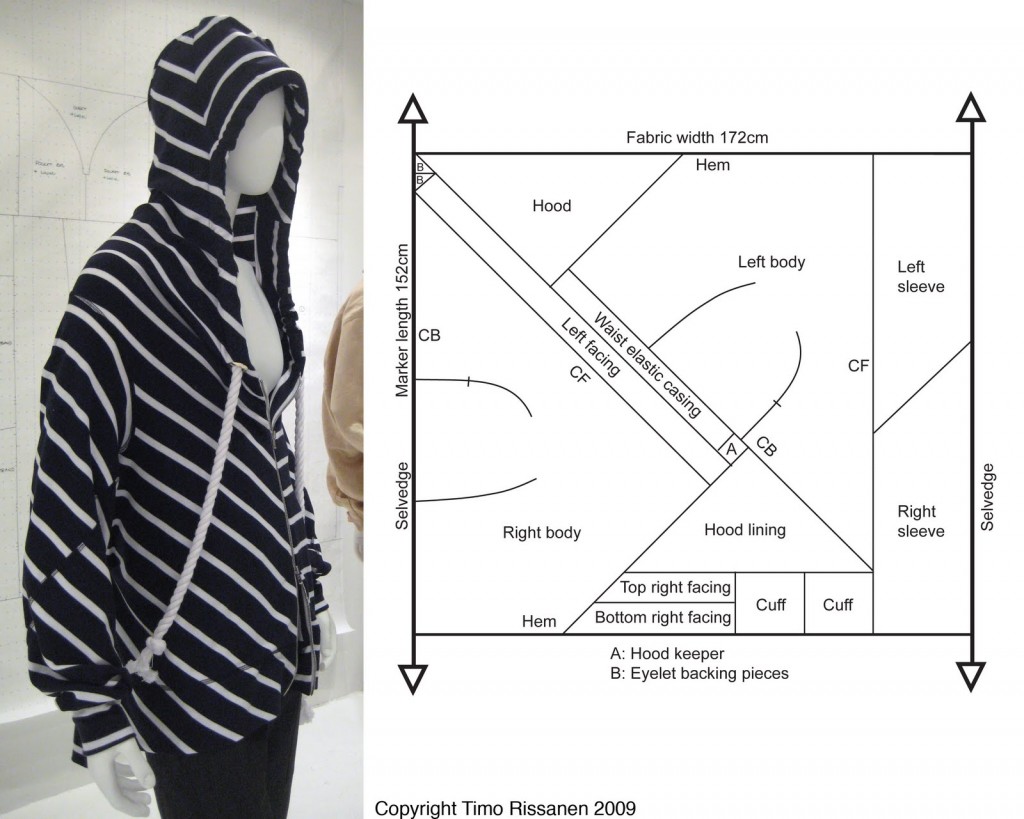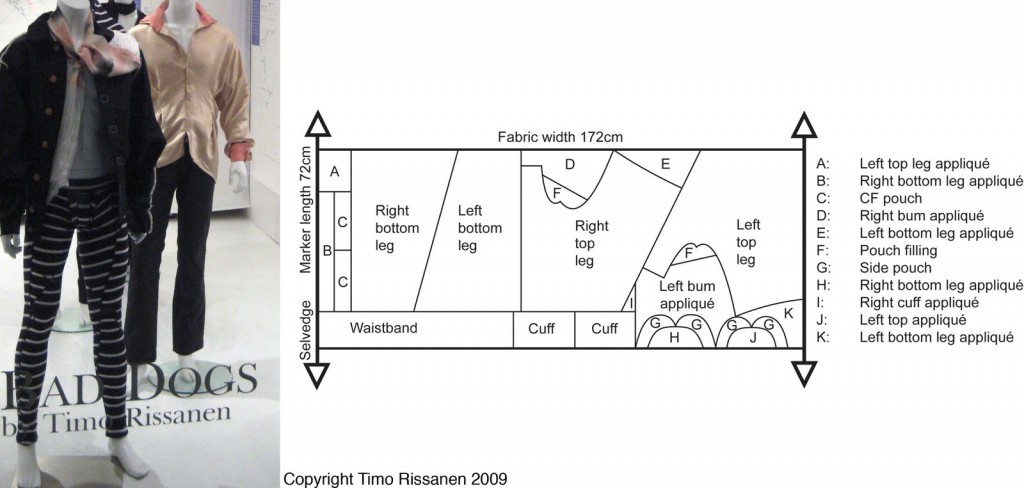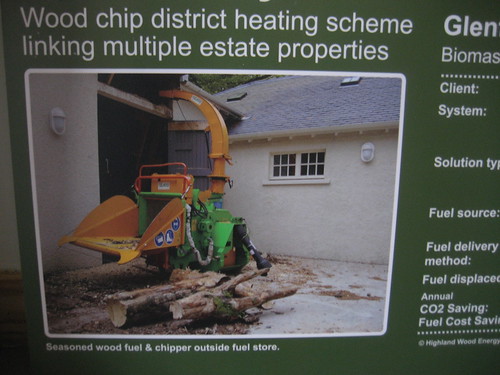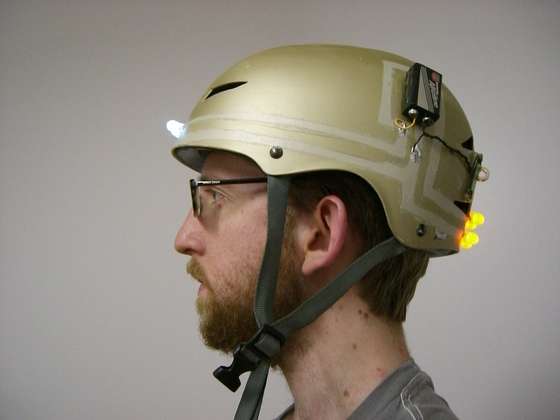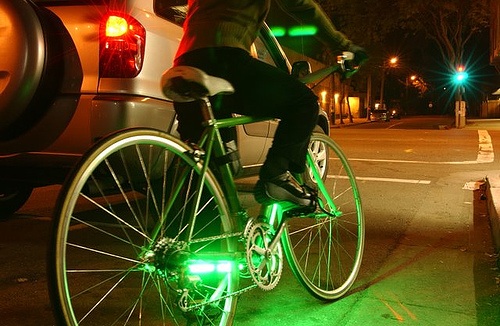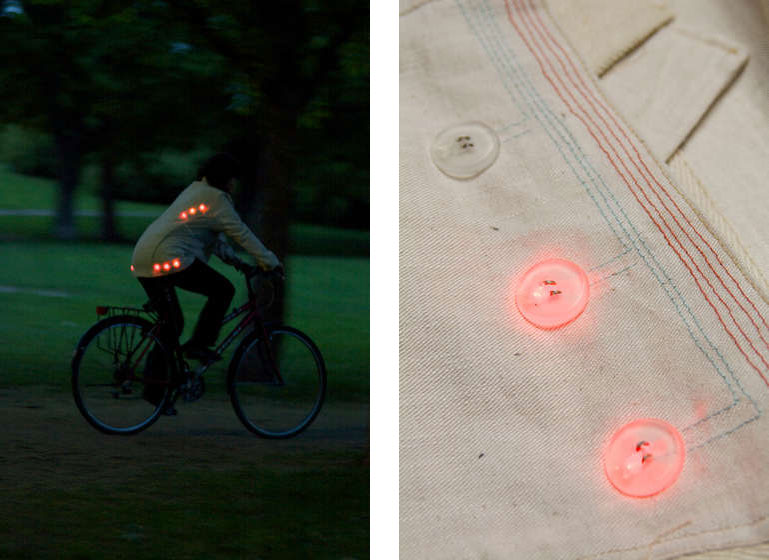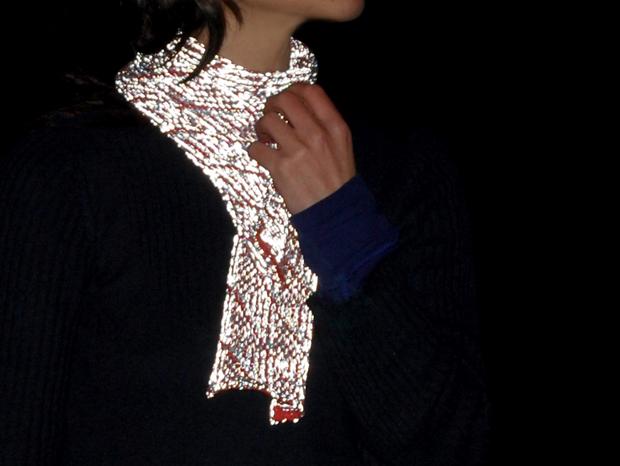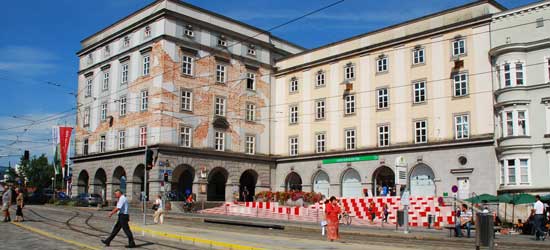The fashion industry is the poster child for un-sustainable practices, as we’ve already seen from the myriad of social and environmental problems plaguing the cotton trade. Fashion designers share the responsibility, because they are so remote from the means of production – usually outsourced to Southeast Asia, Africa or South America – that their designs reflect few of the practical concerns on the factory floor. Parsons’ Timo Rissanen is the proponent for a new form of sustainable fashion design: a “no-waste approach” that avoids altogether the 15% waste typical of the industry (read his paper here). Timo’s no-waste designs (above and below) show the creative potential of eliminating waste as part of the fashion design process. At heart is a humbling realization: “Fabric ought to be considered a precious resource once again.” Timeless designs like these only strengthen his argument.
Heat Local

Last week John took me to see Highland Wood Energy, Scotland’s largest biomass heating company. While the idea of burning wood is not particularly new, modern chip and pellet furnaces provide a uniquely sustainable solution for regions with a natural overabundance of wood (whether from natural growth or industrial waste). In particularly isolated regions like the Highlands, the near-zero footprint of wood is an especially attractive alternative to shipping heating oil or gas from where it’s extracted. HWE’s Bruno Berardelli showed me this map (above), which illustrates the oft out-of-the-way locales where their stoves are being installed. Each installation has a strategy for sourcing the wood fuel, which in many cases can be obtained by chipping local wood. As a result, some of the forested islands of Scotland are now self-sustaining in terms of heating fuel. It remains to be seen how sustainable biomass heating will be in the future and whether any other waste streams will be reasonable as ways to heat locally.
The Food Tastes Better
It’s been a while since I’ve posted to this blog – not out of laziness, but because the Sourcemap project has taken hold of all my attention. That’s how I forgot to mention this video, shot with Matthew Hockenberry this past August, which depicts our first users ever: Robert Harris of Season to Taste Catering and Alden Cadwell of Sustainable Food Systems. Robert was instrumental to the development of the project and, as you can see from the video above, he is an inspiring advocate of local food even in the dark and cold of the Northeast. Please enjoy!
Prison Flight Maps
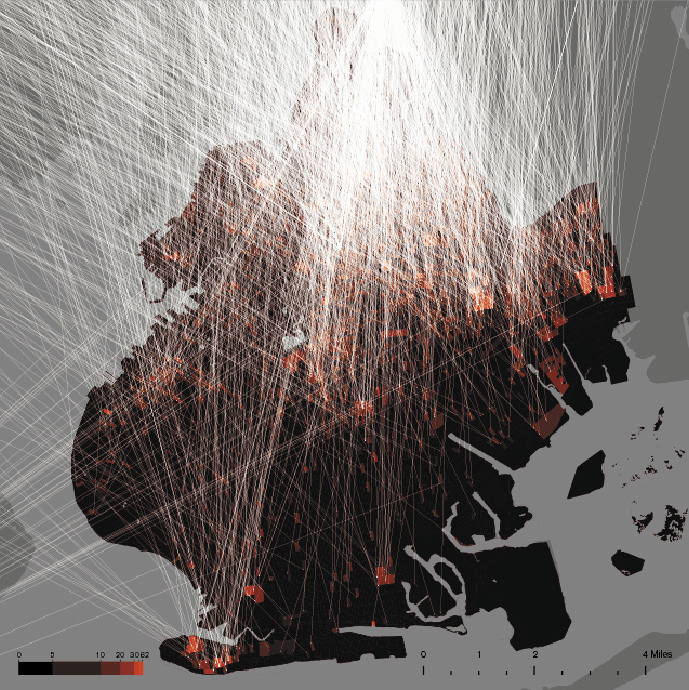
At the MoMA last week I stumbled across the elegant map-based visualizations of the Spatial Information Design Lab at Columbia’s School of Architecture. The Million Dollar Block project (pdf) explores the impact of incarceration on specific neighborhoods of New York City and Brooklyn in particular. The staggering visualizations at once depict the incredible expense of relocating Brooklynites to prison facilities in Upstate New York (amounting to mass migration) and the astonishing substitution of social services with millions of dollars per block of prison expense. They hope the visualizations will serve a diagnostic role:
Guided by the maps of Million Dollar Blocks, urban planners, designers, and policy makers can identify those areas in our cities where, without acknowledging it, we have allowed the criminal justice system to replace and displace a whole host of other public institutions and civic infrastructures.
These maps remind me of the prison labor diagrams from Linz. They monumentalize migration patterns related to imprisonment and embed a morbid story in the map of a place. As web-based map visualizations continue to expand in quality and complexity we can one day hope to tackle this issue on a more universal scale, mapping the hidden costs (externalities) of failed social policy.
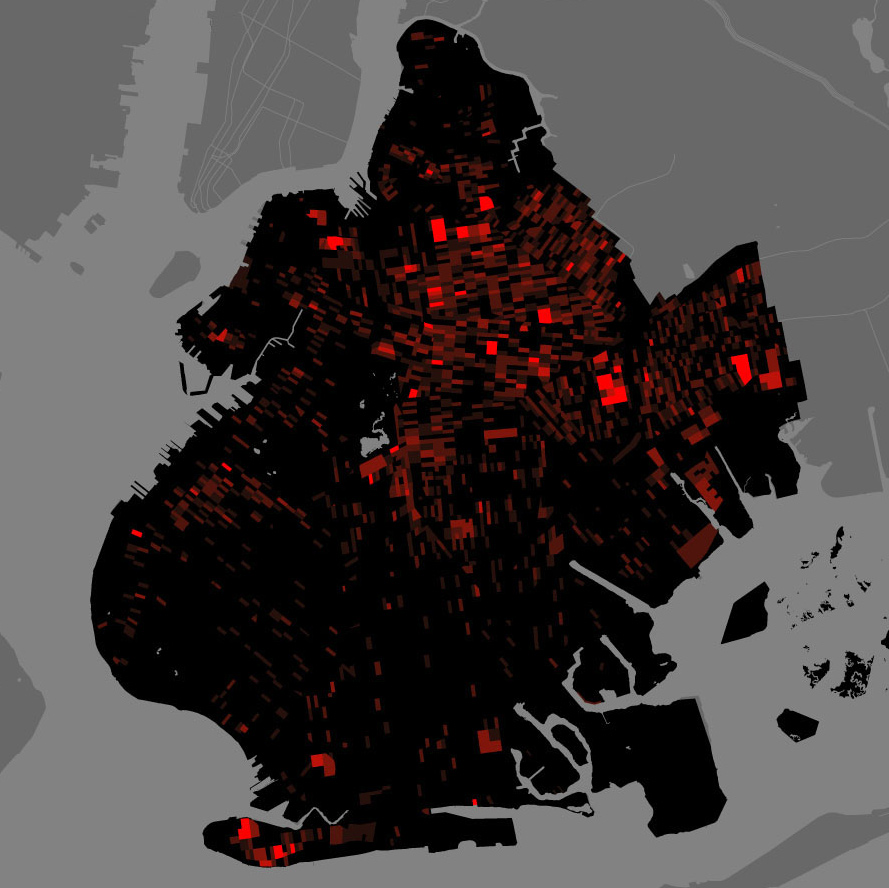
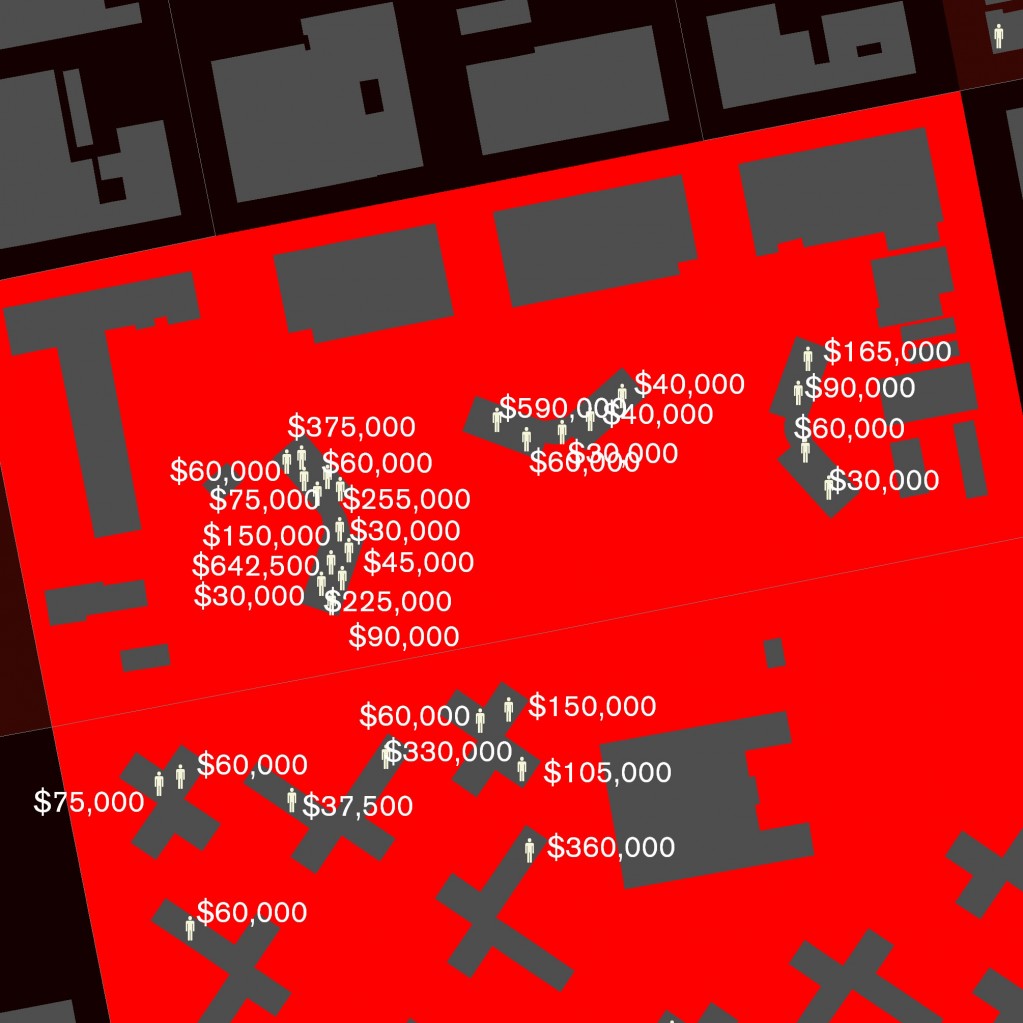
Pocket Wikipedia
UPDATE: This is the wiki reader, a device available for $99 and that runs for one year off a pair of AAA’s.
Last night Wikimedia board member Mako Hill showed me his prototype of a new mobile device for searching Wikipedia, using a simple reflective display and touch screen and an SD card to contain the latest version of the online reference.
Lego Papercraft
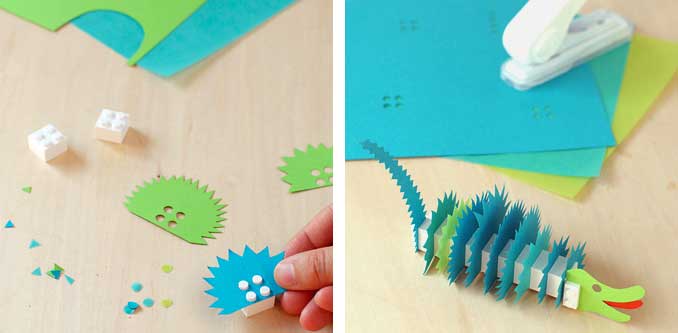
Goro Motai pointed me to this collaboration between Muji and Lego to augment plastic building blocks with papercraft figures. Using a custom paper puncher, sheets of construction paper can be made to clip onto the plastic nubs on regular lego blocks. Although the construction paper is treated as a flat medium, this merging of 2D and 3D craft could combine folded paper origami to greatly expand the sculptural expression of ho-hum building blocks.
Bike Brights
Gus writes “Have you made or do you know of something that both of us could wear that would enhance our visibility as bicyclists?”
There are a number of ways for us bicyclists to stand out day or night, ranging from the ultra-geeky to the super-fashionable. Here they are in that order:
1. Make your own helmet with head+taillights
Using conductive ink, Instructables member bekathwia superimposes a circuit on a hard-shelled helmet for a Tron-like integration of safety and more safety.
2. Ground effects
Where would we be without LEDs? The Down Low Glow lights are ground effects for your bike: available in a variety of garish colors and easily attached to any frame, they’re bright enough to define your own personal bike lane.
3. LED-studded jacket
In another Instructables project, kempton disguises LED lights as clear plastic buttons in an otherwise normal jacket, because “Not everyone wants to look like an athlete while cycling to work or school.”
4. Reflective accessories
LFLECT accessories from lost values are designed to make bicycle riding safe and fashionable – a variety of knitted accessories are available as well as reflective lace you can sew into any garment.
Structural Problems
The Bridgehead buildings in Linz (Austria) have a tortured history: they were built as the Fuhrermuseum, to house Adolf Hitler’s own collection of stolen art. This past year Linz celebrated as cultural capital of Europe, and a powerful series of interventions to one of these buildings sought to (literally) uncover the history of their construction. Jagged lines carved from the stucco veneer represent the paths taken by (forced) laborers brought to Linz to build the structures. Concentration camp prisoners quarried the stone while others built the foundations and interior furnishings were stolen from prisoners’ homes. A disturbing sight, to be sure, but a necessary one – if only the other museums built by slaves and filled with stolen art bore witness to their own histories.
